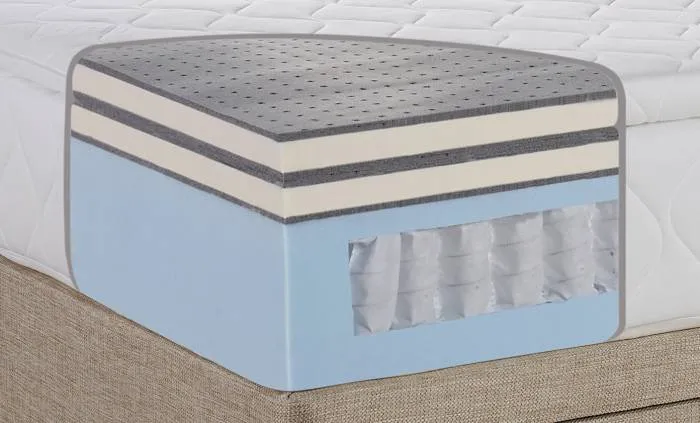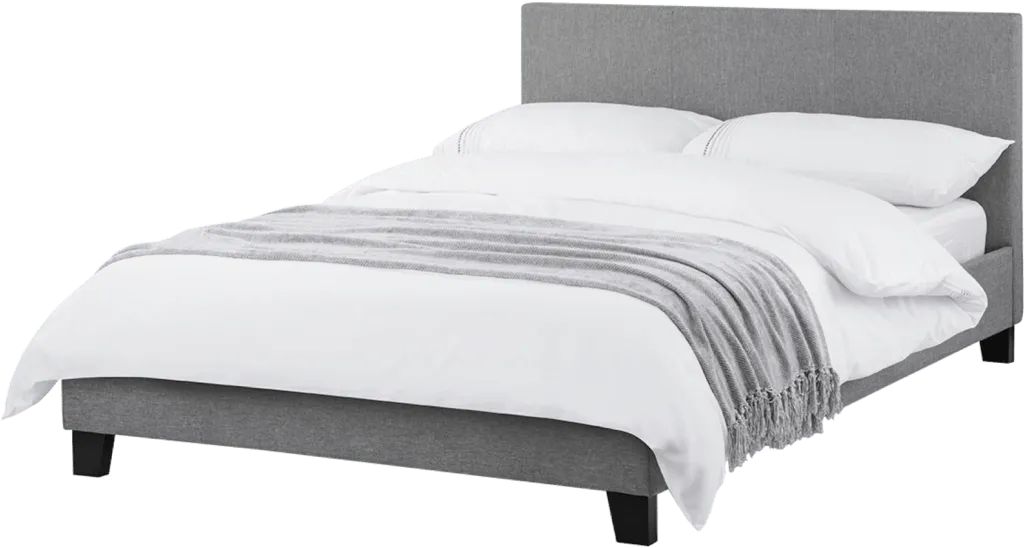Foam density, hardness & firmness in mattresses
Updated 2020: You may be wondering why so few memory foam mattress companies will divulge their data on the foams they use. Unfortunately, without this figure, it is near impossible to compare or even know what kind of foam mattress you are buying. Like we advocate throughout our mattress site, you should always ask a retailer or mattress seller about the exact specifications of all the fillings of your new bed before buying it.

Only this detail lets you work out how suitable and appropriate any given mattress will be for you. Read on for more tips when it comes to memory foam mattresses.
Mattress foam grades explained
Memory, Hybrid and Latex foam mattresses use different measurements for mattress firmness when compared to traditional pocket spring mattresses. The foam grades are often completely hidden by retailers, mainly so you can’t compare mattresses when choosing a new bed. We explain the measurements you need to know when researching new foam mattress grades.
Density of mattress foam
The density of a foam refers to the weight of the foam in kilograms per cubic metre. High density foam mattresses have more foam per cubic meter than lower density foams. Simply put, you get more foam for your money. The more foam, the higher the resistance to loss of hardness and the more resilience there is to stress.
Usually, the higher the density of the foam, the firmer the foam’s support level.
| Foam Density (Memory, Hybrid or Latex) | Feel/Tension |
|---|---|
| 30kg | Ultra Soft |
| 40kg | Soft |
| 50kg | Medium |
| 60kg | Medium |
| 70kg | Firm |
| 80kg | Ultra Firm |
Hardness of mattress foams
The hardness of foam is a measurement that gives a perceived firmness rating for a customer (i.e. the harder the foam is, the firmer it will feel). This is where density being the only measure of support is inaccurate. You need to also know the hardness. Hardness is measured in a set range of tolerance and is not a one size fits all figure. It is worked out by compressing a piece of foam to 40% of its original size.
This measurement is then displayed in newtons (N) so a hardness rating of 70-100N means it takes between 70 and 100 newtons of pressure to compress it to 40%. The higher the figure the more force is needed and, therefore, the firmer the foam.
High density mattress foams explained
The only way to accurately work out the firmness and quality of foam is to know both the density and the hardness. The density shows the amount of foam and the hardness gives the firmness. You also need to know the desired feel or reaction of the foam (i.e. you could have a very hard foam mattress that is very responsive and ‘springy’, like Laygel).
So, although it’s got a high hardness rating, the manufacturing method means the end result is a somewhat ‘bouncy’ foam. You need to know the way the foam is intended to react: fast response, slow compression or supportive, for example.
If you don’t have these measurements and descriptions, you’re only really guessing. For example, you could have a 60kg foam with a hardness of 40-70N and a 40kg foam with a hardness of 70-100N, so the less dense foam would be firmer, but the 60kg softer foam would have high resilience as there is more foam within it.
| Foam Grade | Foam Type | Density Min KG/M3 | Density Max KG/M3 | Hardness Min (N) | Hardness Max (N) |
|---|---|---|---|---|---|
| Vasco 40 | Vasco Memory Foam | 38 | 42 | 40 | 60 |
| Vasco 60 | Vasco Memory Foam | 58 | 72 | 70 | 100 |
| Laygel 60 | Laygel Hybrid Foam | 57 | 63 | 100 | 150 |
| Coolblue 70 | Coolblue Hybrid Foam | 65 | 70 | 70 | 100 |
| Reflex 300 | Reflex Support Foam | 30 | 32 | 100 | 130 |
| Reflex 300F | Reflex Support Foam | 30 | 32 | 130 | 160 |

What is ILD in a mattress?
ILD stands for Indentation Load Deflection. It provides a figure that shows how much force is needed to compress foams and is often used in the American mattress market. You will struggle to find many UK manufacturers that give you the ILD of UK based memory foam or Latex mattresses. We tend to use density and hardness more often.
ILD relates to the number of pounds (lbs) of pressure/force that is required to indent/compress the foam to a depth of 4” by 25%. This test is performed on an area of 50 square inches. Simply put, it’s a pressure test. The higher the number, the firmer the foam and more ‘pressure’ is needed to compress it.
| ILD (Indentation Load Deflect) | Tension/Firmness |
|---|---|
| 16.5 ILD - 22.5 ILD | Ultra Soft |
| 22.5 ILD - 26.5 ILD | Soft |
| 26.5 ILD - 30.5 ILD | Medium |
| 30.5 ILD - 34.5 ILD | Firm |
| 34.5 ILD - 38.5 ILD | Extra Firm |
With ILD, if you took a heavier and a lighter sleeper together, then the heavier sleeper would compress a 25 ILD mattress far faster and it would feel softer than the lighter sleeper. The lighter sleeper would find this 25 rather firm in comparison. So it is worth bearing in mind that your body weight has a direct correlation with ILD as with all mattress spring tensions. You can’t take the figure in isolation either. You need to know the material type and properties it has. Confusing, we know!
We only use Natural Latex and other quality foams and present all the data you need to make an informed choice. When trying to compare to other foams remember that, without the density and hardness, you’re at best guessing. We would always ask you to challenge mattress retailers about the hardness of their foams.
You also need to fully understand how the foam will work for you and your sleeping style. So it’s always worthwhile taking expert advice. Some people don’t realise that foams are far warmer than natural fibres, so even when picking the correct density or ILD they then realise too late that the foam may not be suitable for them!
If you need more guidance then give a team a call for friendly expert advice on mattresses on 0161 437 4419.


Ask us a question.
There are over 6000 questions and answers submitted by you on all questions about mattresses and bed problems. Enter a keyword such as Vi Spring, John Lewis beds, bad back or Memory Foam and see if your question has already been answered.
You can filter popular questions by the categories below. If you can’t find an answer, ask a new question below. We aim to respond to all questions within one working day.




































 Mattresses
Mattresses  Take our mattress quiz
Take our mattress quiz  Contact
Contact  About us
About us 


